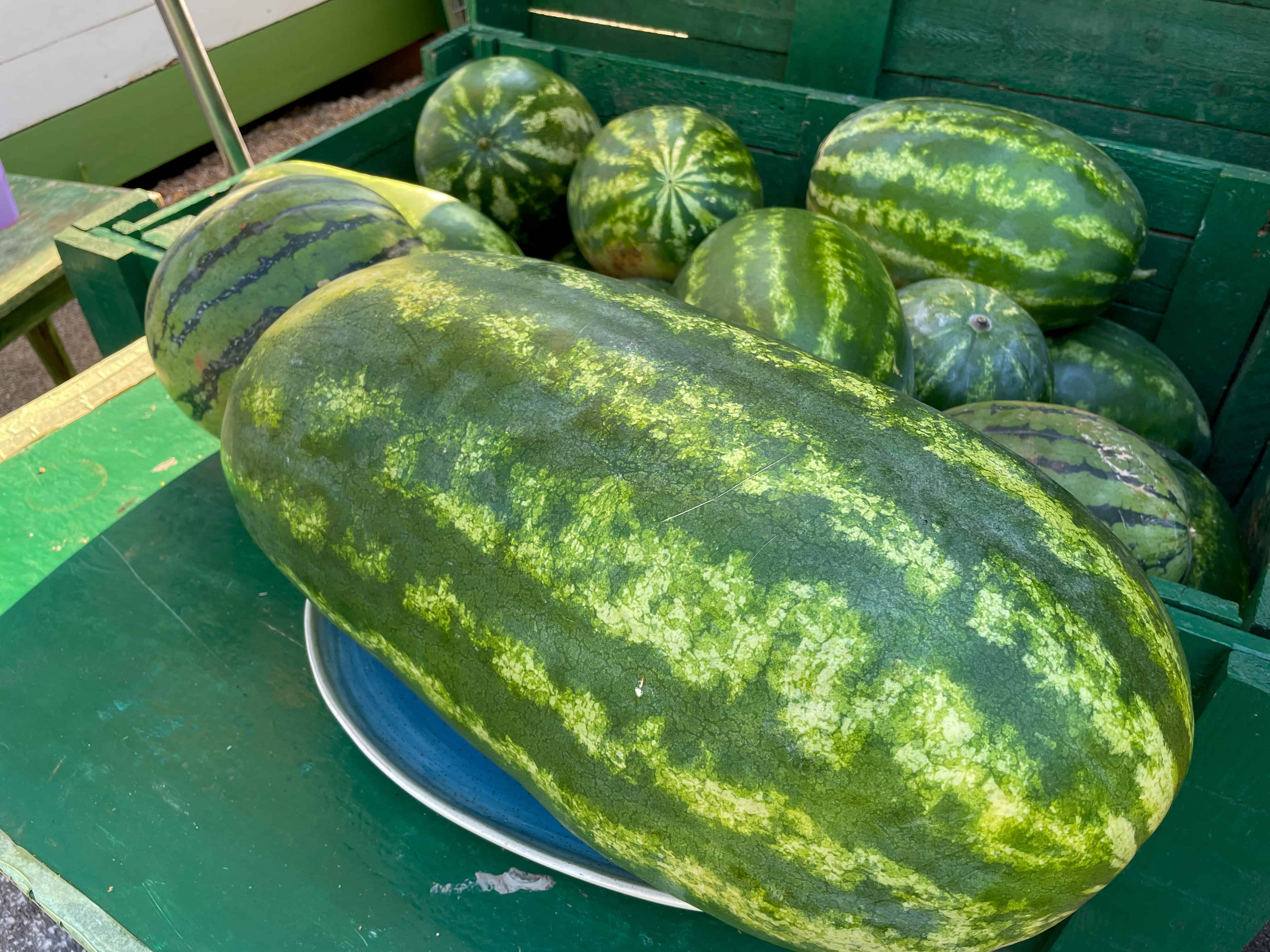The world of agriculture never ceases to amaze, with its ability to produce extraordinary feats of nature. One such marvel that continues to capture the imagination of enthusiasts and researchers alike is the legendary quest for the largest watermelon ever grown. These behemoth fruits, reaching weights that seem almost unfathomable, epitomize the astonishing potential of nature’s bountiful offerings.
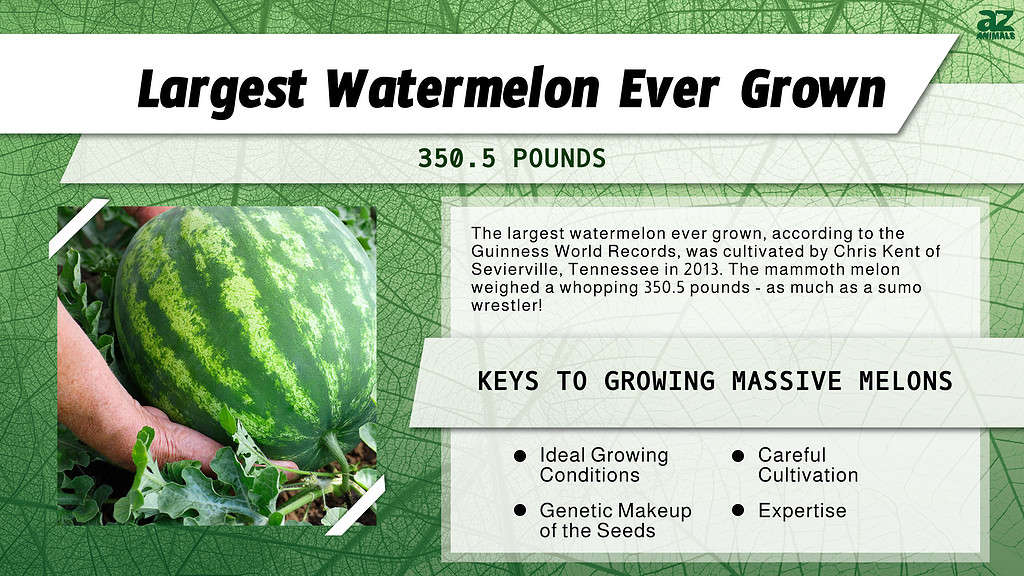
Stepping into the realm of gargantuan watermelons, we encounter a world where size becomes a tangible form of accomplishment. Amidst the vast fields and dedicated efforts of agricultural experts, a select few individuals have managed to cultivate these massive fruits that defy expectations. The pursuit of breaking records and establishing new benchmarks for the world’s largest watermelon has become an obsession. Each triumph is celebrated as a testament to human ingenuity and the marvels of the natural world. However, the world’s biggest watermelon has yet to be beaten nearly 10 years later.
Let’s take a look at the world’s largest watermelon! But first, let’s definite what a watermelon is.
What is a Watermelon?
Everyone loves watermelon in the summer. It’s a delicious, sweet, refreshing, and hydrating fruit. It personifies summer with its vivid hues, juicy flesh, and sweet flavor.
Appearance and Characteristics

three watermelons growing in the garden closeup
©Tianika/iStock via Getty Images
Watermelon is a striking sight to behold. It has an oval or circular form and can weigh anything from a few pounds to 50 pounds or more. However, our top biggest melon ever recorded weighed significantly more than 50 pounds! The exocarp, or outer rind, is thick and robust. It has an eye-catching pattern of dark green stripes on a lighter green backdrop. Some variants may display a consistent shade of light green or yellow. The inside flesh has a bright variety of pink, red, or yellow colors when cut through the rind. It may either be seedless or studded with glossy black seeds. The flesh has a blast of reviving sweetness and is juicy, crisp, and delicious.
Nutritional Value
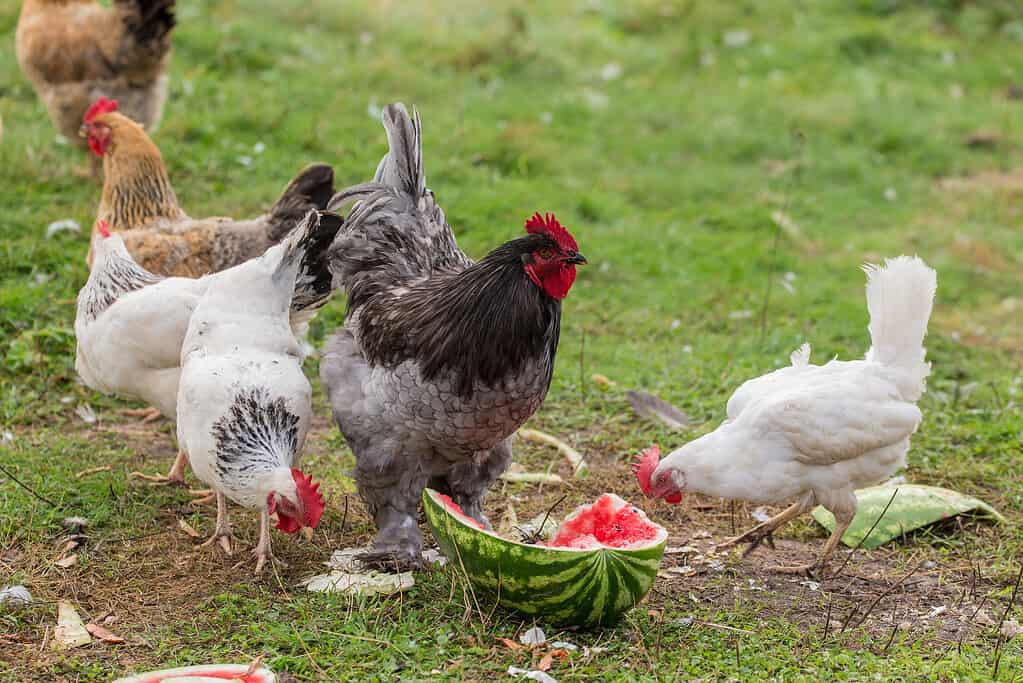
Chickens love melons of all types, including the rinds and the seeds.
©Argument/iStock via Getty Images
In addition to being a delicious fruit, watermelon is also quite healthy. Due to its high water content, it is a great source of hydration and a great option to battle the summer heat. Watermelon is also a guilt-free treat due to its low calorie and fat content. It also contains a large amount of vitamins A and C. These are essential for maintaining a strong immune system and fostering healthy skin. Just as well, watermelon boasts lycopene, a strong antioxidant with the ability to lower the risk of several cancers and improve heart health.
Growing Regions
Watermelon is planted throughout the world and does best in warm areas. It is indigenous to Africa, and it is thought that Ancient Egypt is where it first became domesticated. Today, watermelons are cultivated in nations including Brazil, China, Turkey, Iran, and the United States. States like Florida, Georgia, Texas, and California are well known for their watermelon production in the United States. For the fruit to flourish to its greatest capacity, it needs a lengthy, hot growing season and lots of sunshine.
Growing Tips
Warm areas with temperatures between 70 and 90 degrees F are ideal for growing watermelon. Pick a location in your garden that is sunny and gets at least six hours of sunshine each day. The soil should be loose, rich in organic content, and well-draining. The fertility of the soil can be improved by adding compost or old manure.
Once the soil reaches a temperature of around 70 degrees F, watermelon seeds can be planted straight in the ground. In rows, place the seeds approximately two inches apart, with a distance of 6 feet between each row. You may also start seeds indoors and then move them outside once the seedlings have grown.
Regular watering is necessary for watermelon plants, especially during hot and dry spells. Maintain a constant moisture level in the soil that is not wet. During planting and the whole growing season, a balanced fertilizer may be used to supply the nutrients required for strong growth.
By utilizing suitable pesticides or organic pest management techniques, you can shield your watermelon plants from common pests like aphids, cucumber beetles, and squash bugs. Just as well, illnesses like powdery mildew and bacterial wilt may be avoided by following crop rotation and ensuring excellent ventilation around the plants.
Depending on the cultivar, watermelons can be harvested anywhere between 80 and 100 days after planting. Look out for indications like a dull and matte appearance of the rind, a yellowing of the tendril closest to the fruit, or a hollow sound when tapped. Carefully cut the fruit from the vine to harvest, leaving a short stem attached.
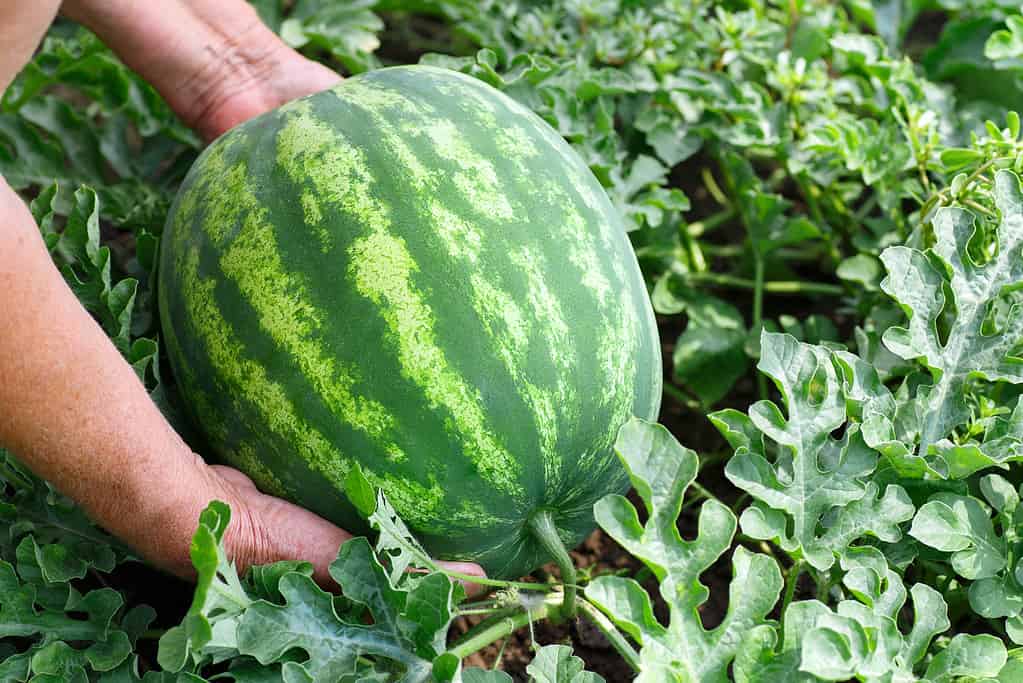
Growing watermelon (pictured) is not that difficult, though reaching world-record sizes may prove difficult.
©Alter-ego/Shutterstock.com
The Largest Watermelon Ever Recorded
Watermelons are known for their impressive size, but some have achieved extraordinary dimensions that have captured the attention of people worldwide. From its astonishing weight to the dedication of the grower, this watermelon stands as a testament to nature’s incredible capabilities.
The Record-Breaking Watermelon
Guinness World Records recognizes the largest watermelon ever grown as a testament to the exceptional efforts of Chris Kent, a farmer from Sevierville, Tennessee, in the United States. In 2013, Kent achieved a remarkable feat by cultivating a watermelon that weighed a staggering 350.5 pounds, which weighs more than the average sumo wrestler! This mammoth fruit surpassed the previous record and astonished watermelon enthusiasts worldwide.
The Journey to the Record
Growing such an enormous watermelon requires meticulous care, expert knowledge, and a touch of luck. Chris Kent, an experienced and passionate farmer, dedicated countless hours to nurturing his watermelon plant, ensuring its optimal growth. From selecting the right seeds to providing ideal growing conditions, Kent’s commitment and expertise played a significant role in his record-breaking achievement.
Ideal Growing Conditions
Creating the perfect environment for a watermelon to reach its maximum potential involves several factors. Firstly, watermelon plants thrive in warm climates with long growing seasons, ample sunshine, and temperatures between 70 to 90 degrees F. Adequate soil preparation, including proper drainage and nutrient-rich soil, is crucial for the plant’s overall health and productivity. Just as well, consistent watering and timely application of fertilizers help nourish the plant as it develops.
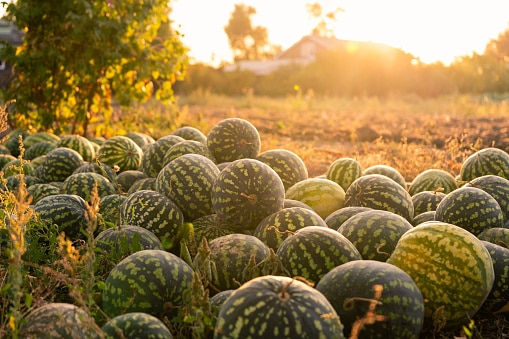
A pile of watermelons in the field at sunset is a lovely sight for a successful farmer.
©Scharfsinn86/iStock via Getty Images
Careful Cultivation
To cultivate a watermelon of such extraordinary size, Kent employed several techniques. Pruning and training the plant to focus its energy on fewer fruits allowed for the development of larger, more substantial watermelons. Regular monitoring and adjustment of soil moisture levels ensured optimal growth and prevented the risk of overwatering or underwatering. Kent also implemented a strategic crop rotation plan to prevent disease and optimize soil fertility.
The Role of Genetics
While cultivation techniques played a crucial role, the genetic makeup of the watermelon seeds used by Chris Kent was equally significant. Genetic selection for traits such as size, weight, and flavor over generations has resulted in watermelon varieties that can achieve impressive dimensions. Hybrid seeds, carefully bred to combine desirable characteristics, are often used to maximize the chances of producing larger fruits.
Celebrating the Achievement
Kent’s record-breaking watermelon was met with awe and admiration from watermelon enthusiasts and experts worldwide. The fruit was displayed at the annual Great Pumpkin Farm in Clarence, New York, where people marveled at its sheer size and celebrated the dedication and passion of its grower. The accomplishment not only put Chris Kent’s name in the record books but also served as inspiration for other watermelon enthusiasts to push the boundaries of what is possible.
Continuing the Quest
The record set by Chris Kent’s Watermelon has not gone unchallenged. Watermelon growers around the world continue to strive for bigger and more impressive fruits. Each year, competitions and events showcase the most substantial watermelons and celebrate the achievements of those who cultivate them. The quest for the world’s largest watermelon serves as a testament to human ingenuity, nature’s potential, and the joy of pushing boundaries.
The world’s largest recorded watermelon, weighing an astonishing 350.5 pounds, stands as a testament to the dedication, expertise, and passion of its grower, Chris Kent. This remarkable achievement captures the imagination and admiration of watermelon enthusiasts worldwide. From creating ideal growing conditions to employing careful cultivation techniques, Kent’s record-breaking watermelon represents the possibilities that can be achieved through a combination of human knowledge and nature’s wonders. As growers continue to push the boundaries, the quest for even larger watermelons persists, adding excitement and inspiration to the world of agriculture and record-breaking accomplishments!
Thank you for reading! Have some feedback for us? Contact the AZ Animals editorial team.

